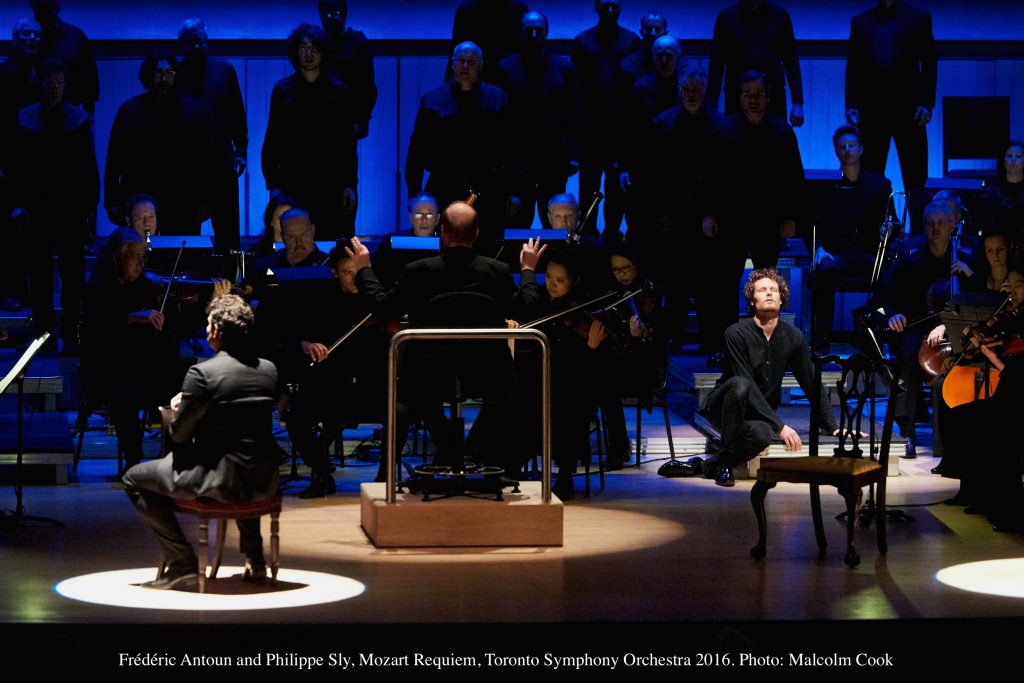1791. Mozart was approaching endgame. Unemployed, debt-ridden, his prospects had seldom looked dimmer. The fickle Viennese court, a coveted source of income, had grown weary of the irrepressible 35-year old provincial from Salzburg. His meagre clutch of paying students had largely abandoned him. But there was to be another chapter. A twist in his life story.
In July the Grey Messenger, as Mozart would come to call him, appeared at his door. The mysterious emissary had a proposal. His employer, an anonymous rural aristocrat, later identified as frustrated would-be composer Count Franz von Walsegg, had recently lost his wife and would pay handsomely for an accompanied requiem. Mozart eagerly pocketed the first instalment of his generous fee, temporarily shelving the project in favour of a sudden deluge of more pressing assignments. An unforeseen streak of good luck kept him furiously preoccupied by work on two new operas with virtually simultaneous premieres, La clemenza di Tito and Die Zauberflöte (The Magic Flute).
Mozart had scarcely begun to tackle the von Walsegg commission in late October when his health, never robust, suddenly collapsed. In November he took to his sickbed. By early December he was dead. His monumental funerary score, one that Mozart had increasingly associated with his own looming mortality, was still unfinished. How the work was completed and by whom has been the subject of unceasing speculation for 260 years. What is abundantly clear, however, is that the towering Requiem Mass in D Minor, written to grant repose to a noblewoman’s soul, will forever endure as a transcendent chronicle of Mozart’s own final days, a timeless response to suffering tempered by hope.
Under the intensely humane guidance of visiting conductor Bernard Labadie, the Toronto Symphony Orchestra concludes its January 2016 Mozart@260 Festival with a highly anticipated, semi-staged Requiem at Roy Thomson Hall. Mounted with stark intensity by groundbreaking opera director Joel Ivany, the expansive production, a more polished elaboration of a spare workshop experiment unveiled last spring, tears at the heart. Glowing and glorious, the TSO premiere delivers a unique experience of great power and beauty from the outset.
To the somewhat surprising, wholly unrelated accompaniment of the exquisitely poignant Larghetto from Mozart’s Clarinet Quintet in A Major, movingly played by principal Joaquin Valdepeñas and the TSO Chamber Soloists, the Requiem’s full complement of musicians and vocalists launches the Mass with a hushed procession through the darkened house. One by one, silently depositing slips of paper, each bearing the name of a deceased loved one on a pair of risers suggestive of caskets or graves, the superb 40-voice chorus raises chills with an electrifying Requiem aeternum (Grant them eternal rest). Drawn from members of the Amadeus Choir and Elmer Iseler Singers, choristers, silhouetted by lighting designer Kevin Lamotte’s deep twilight blue floods, anchor a powerful synthesis of music and theatre. Pose and gesture repeatedly emphasize score and text as this acutely physical TSO performance unfolds.
Creative reimaginings notwithstanding, this is a production that simultaneously looks forwards while vividly illuminating the past. History is given a fresh reading.
In creating his Requiem, Mozart faced a double set of hurdles. The first was an absolute. His music, evocative and illustrative, had to adhere strictly to the traditional Catholic liturgy. A memorial mass for the dead evolves in distinct phases. Ritual and routine are unwavering. Introitus segues to Kyrie, a plea for divine mercy. Sanctus proceeds directly to Benedictus to Agnus Dei, a prayer for deliverance, in precise order. The second challenge, admittedly self-imposed but clearly felt no less intensely by the composer, was to propel sacred music in a new, more spontaneous, heartfelt direction. An applicant for the post of Kapellmeister at Vienna’s St. Stephen’s Cathedral needed to make a forceful impression and Mozart was not about to let the opportunity go unseized.
Technically, the Requiem in D Minor is unlike any that went before. Mozart’s unwavering focus on voice, radiant orchestral colours, vigorous use of counterpoint all contribute to its startling originality. Labadie and artists give stirring expression to the work’s rich texture. But above all else, it is opera that gives the Requiem its breathtaking drive.
With La clemenza di Tito and Die Zauberflöte surely still fresh in his mind, Mozart layered his Mass with drama, a feature profoundly in evidence this week at the TSO. Summoning Elizabeth Kubler-Ross’s On Death and Dying, director Ivany finds, not so much a source of libretto, but rather a resonant echo of the American psychologist’s seminal study on human loss in Mozart’s music. In the hands of singer actor soloists, Kubler-Ross’s five stages of grief — denial, anger, bargaining, depression, acceptance — become vibrant emotional motifs, inescapable collective responses to personal tragedy made tangible in gesture and pose.
In a wordless display of slumped shoulders, defiantly crossed arms, downturned gazes, soprano Lydia Teuscher, bass-baritone Philippe Sly, tenor Frédéric Antoun and mezzo-soprano Allyson McHardy draw us into their intimate realms of searing pain. Sly is particularly eloquent in his theatrical behaviour, inhabiting his grieving persona body and soul, a centre of despair. The image of his shattered character lying centre stage, crushed and hopeless, surrounded by an orchestra bravely sounding the depths of sadness is unforgettable.
Gradually, through a succession of small, tentative, tender gestures of compassion, a sense of mutual caring emerges out of Ivany’s somber psychodrama. A supportive community is born. Hope triumphs over hopelessness. Absent from the director’s earlier 2015 approach to Mozart’s anguished Mass, catharsis ultimately prevails.
The sense of evolution is further echoed by this Requiem’s subtle orchestral and vocal redesign. Employing a reinvigorated performance score penned by Harvard musicologist and researcher Robert D. Levin, conductor Labadie greatly softens the dynamics of the piece. Soloists are clearly heard, emerging bright and articulate from considerably uplifted, unencumbered choral lines. Cherished standards like the gentle Recordare (Remember, kind Jesus), the Requiem’s only statement of existence devoid of torment, are given a new lease on life, ensembles acquiring an animated, typically Mozartian dazzle, very nearly operatic at times in their loft and buoyancy. Teuscher, Sly, Antoun and McHardy each contribute more than their fair share of splendid singular vocal punctuation but it is in Labadie’s keen handling of the Requiem’s freshly enhanced, more fugal moments that they truly shine. Their progression through Tuba mirum (The wondrous trumpet), one advancing after the other, voices intertwining and blending in a wave of seamless harmony is a moment of exceptional splendour.
Soaring themes. Vivid tableaux. Soundscapes and images tumble through the mind long after this supremely 21st century Requiem has drawn to a close. Soloists exit. Four chairs stand in a square of pure white light. Darkness surrounds but like Mozart’s music, brightness and humanity endure.


